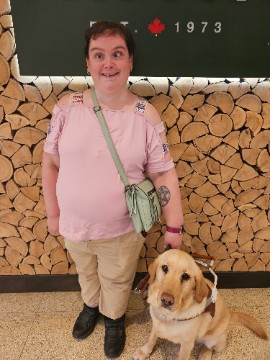What is Trichotillomania?
Trichotillomania, often referred to as hair-pulling disorder, is a mental health condition characterized by the compulsive urge to pull out one’s hair from various parts of the body, leading to noticeable hair loss. It is classified as a body-focused repetitive behavior (BFRB) and can significantly impact an individual’s emotional and psychological well-being. Many people who struggle with trichotillomania often experience increased anxiety, depression, and feelings of shame or embarrassment.
Understanding the Causes of Trichotillomania
The exact causes of trichotillomania are not entirely understood, but research suggests a combination of genetic, environmental, and psychological factors may contribute to its development. Individuals with a family history of BFRBs or other mental health issues may be more susceptible to developing trichotillomania. Additionally, stressful life events, trauma, or anxiety can trigger the urge to pull hair as a coping mechanism.
The Impact of Trichotillomania on Daily Life
Trichotillomania can have far-reaching effects on an individual’s life. Many people hide their condition due to feelings of shame and may avoid social situations, leading to isolation. The visible consequences of hair loss can impact self-esteem and body image, making it challenging for individuals to engage in everyday activities. Furthermore, the emotional toll can lead to anxiety, depression, and other mental health issues.
Recognizing Trichotillomania: Symptoms and Diagnosis
Recognizing trichotillomania can be challenging as it often varies in severity and manifests differently in individuals. Common symptoms include repetitive hair-pulling, feeling tension before pulling, relief or satisfaction after pulling, and distress related to hair loss. Diagnosis typically involves a thorough evaluation by a mental health professional who will assess the individual's history, symptoms, and overall functioning.
Why Seek Treatment for Trichotillomania?
Seeking treatment for trichotillomania is essential for improving overall well-being. Without intervention, the condition can worsen, leading to heightened distress and associated mental health issues such as anxiety and depression. Managing trichotillomania effectively can help individuals regain control, improve self-esteem, and enhance their quality of life. Early intervention often leads to better outcomes.
Therapeutic Approaches to Treating Trichotillomania
There are various therapeutic approaches for treating trichotillomania, including:
- Cognitive-Behavioral Therapy (CBT): This evidence-based approach helps individuals understand the thoughts and behaviors associated with hair-pulling and develop healthier coping strategies. CBT often includes habit reversal training, where clients learn to identify hair-pulling triggers and replace the behavior with a competing response.
- Eye Movement Desensitization and Reprocessing (EMDR): EMDR is a specialized therapy used to address traumatic memories and can be beneficial for individuals with trichotillomania who have a history of trauma or distressing experiences.
- Acceptance and Commitment Therapy (ACT): ACT focuses on helping individuals accept their thoughts and feelings rather than fighting them. This approach encourages clients to commit to values and take action despite their challenges.
- Mindfulness-Based Cognitive Therapy (MBCT): MBCT incorporates mindfulness techniques to help individuals become more aware of their thoughts and feelings in the moment, promoting emotional regulation and reducing impulsivity related to hair-pulling.
The Role of Support Groups in Recovery
Support groups can play a vital role in the recovery process. Connecting with others who struggle with trichotillomania can provide a sense of community and understanding. Support groups offer spaces for individuals to share their experiences, challenges, and successes, fostering a supportive environment where members can learn from one another. Additionally, the normalization of experiences can reduce feelings of isolation and shame.
Coping Strategies for Managing Trichotillomania
In addition to therapy, various coping strategies can support individuals in managing trichotillomania:
- Stress Management Techniques: Engaging in activities such as yoga, meditation, or deep breathing exercises can help reduce overall stress levels, minimizing triggers for hair-pulling.
- Journaling: Keeping a journal can help individuals track their triggers and identify patterns in their hair-pulling behavior. Writing down thoughts and feelings can also provide an outlet for emotions.
- Fidget Tools: Using fidget tools can provide a physical outlet for restlessness and can help redirect the urge to pull hair.
- Creating a Supportive Environment: Informing trusted friends or family members about the struggle with trichotillomania can foster a supportive atmosphere. Encouragement and understanding from loved ones can aid in recovery.
The Importance of Cultural Competency in Treatment
Cultural values and beliefs play a significant role in how individuals perceive and manage mental health issues, including trichotillomania. As a therapist with Native American heritage, I recognize the importance of integrating cultural understanding into treatment. A culturally competent approach involves respecting and incorporating clients’ cultural backgrounds and values, tailoring treatment to fit their unique experiences. This can enhance engagement in therapy and promote more effective healing.
Finding Help: How to Choose the Right Therapist
Choosing the right therapist can significantly impact the effectiveness of treatment. When seeking help for trichotillomania, consider the following:
- Specialization: Look for a therapist who specializes in treating BFRBs or has experience with trichotillomania.
- Approach: Different therapists use various therapeutic methods. Finding one that employs evidence-based practices like CBT or EMDR can be beneficial.
- Cultural Alignment: A therapist who understands and respects your cultural background can create a safe and supportive environment for healing.
- Comfort Level: It’s essential to feel comfortable and safe with your therapist. Mutual respect and understanding are crucial for a successful therapy relationship.
The Path to Recovery: A Journey of Hope
Recovering from trichotillomania is a journey that takes time, patience, and resilience. It’s essential to remember that healing is possible, and many individuals successfully manage their symptoms through therapy and support. While the path may be challenging, each step towards recovery is a step towards reclaiming autonomy and improving mental health. Surrounding oneself with support, employing effective coping strategies, and engaging in therapy can empower individuals to overcome the struggles of trichotillomania.




